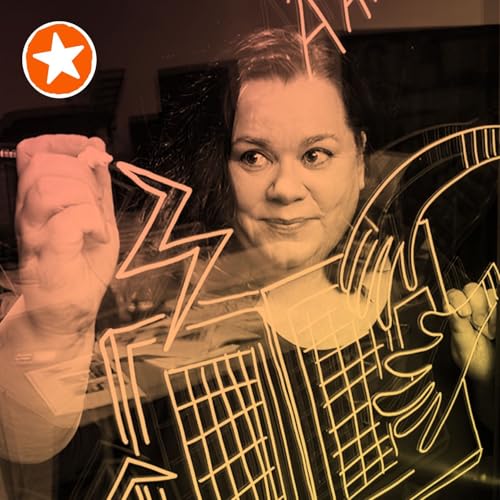In this episode, Ted Shachtman talks about his discovery of the Mental Atlas Method, an imaginative new approach designed to strengthen memory retention. He explains how the method works, why it’s different from traditional techniques, and even guides Mike Rohde through a live trial so listeners can experience the process in real time.Sponsored by The Reflective Travel Sketchnote Workshop VideoHave you ever wanted to create travel sketchnotes from an experience you’ve had, just using the photos and memories you’ve got? In the Reflective Travel Sketchnote Workshop Video, I’ll guide you through my process for creating travel sketchnotes and then help you reflect on your own photos and memories so that you can make travel sketchnotes of your own trips, too!This 2-hour recorded video includes a set of downloadable, printable sketching templates and a process to kickstart your own travel sketchnoting practice. All this for just $20.https://rohdesign.com/travelRunning OrderIntroWelcomeWho is Ted Shachtman?Origin StoryTed's current workSponsor: ConceptsWhere to find Ted ShachtmanOutroLinksAmazon affiliate links support the Sketchnote Army Podcast.Ted on LinkedIn(https://www.linkedin.com/in/ted-shachtman-70930b239/)The Mental Atlas Method(https://www.mentalatlasmethod.com/)CreditsProducer: Alec Pulianas Shownotes and transcripts: Esther OdoroTheme music: Jon SchiedermayerSubscribe to the Sketchnote Army PodcastYou can subscribe to the podcast through iTunes, Google Podcasts, Spotify, Amazon Music, YouTube or your favorite podcast listening source.Support the PodcastTo support the creation, production, and hosting of the Sketchnote Army Podcast, buy one of Mike Rohde’s bestselling books. Use code ROHDE40 at Peachpit.com for 40% off!Episode TranscriptMike Rohde: Hey everybody, it's Mike Rohde again. Got my friend Ted Shachtman here. Ted, how are you doing?Ted Shachtman: I'm good. How are you?MR: I'm good, man. It's good to have you. So, Ted is a very unique guest for the Sketchnote Army podcast in that he is someone who has discovered and has been developing this concept called the Atlas Method. Is that the right way to describe it? TS: It's the Mental Atlas Method, but yeah, typically we just call it the Atlas usually.MR: Yeah, yeah. After a while, you just sort of, the thing. You know, the thing we do. And so, I'm gonna have Ted talk about what he does in his origin story so he can say what it is. But I've experimented with this technique. And it's a way of improving or retaining memory, or I guess both those things. And I found it really fascinating. And I thought for visual thinkers to have expanded memory is always a good thing because in the work we do, where we're trying to take information, complex information, process it, make sense of it, and then put it on a board or on a screen or on a page, is really hard. And anything we can do to expand our capacity, our cache, our whatever it is that we're using to process this is a benefit for us. And then additionally, the way that we're going to do a little demo, it actually gives the capacity for you to not have to draw anything, if you wish to. I think that would be a fair way to frame it, think? TS: Yeah.MR: Okay, so with that, Ted, tell us who you are and what you do.TS: Sure. So as said, Schachtman. I am an educator and software engineer, and cognitive scientist. I went to Vanderbilt University for elementary education and cognitive studies. I've been a teacher for the past three years, and I'm also getting a master's in computer science. So the story with the Atlas was, in around November, and I asked myself this question, which was, how do I become the most general smart person? Like, almost like by the time I'm 50, how can I become just the best leader, CEO, researcher? And I kind of just embarked on this question and led me to a bunch of research, just kind of explored different paths, started visualizing things, talking while I was visualizing. And then the end result after about like eight months of constant work and research is the Atlas Method.MR: So that leads me to the next question, of course, is tell us a little bit about the Atlas Method and how you developed it, in with the framing of an origin story like a superhero.TS: Yeah, yeah. Okay. So, I personally have a really, really bad part of my brain that takes what I'm currently thinking and writes it to long-term memory. You know those games where everyone goes around in a circle and is like, okay, name your name and something you eat, like your favorite food. I'm terrible at that. I'm really bad at watching lectures. I have to watch a video six times. And I wanted to get rid of that because I've always been pretty creative. And I was always looking for some technique or something that would allow me to, I guess, learn faster. And so, the actual origin story is I started talking out loud and visualizing at the same time back in October or November. And I would be analyzing some ...
Más
Menos
 46 m
46 m 57 m
57 m 1 h
1 h 1 h
1 h 54 m
54 m Jan 2 202547 m
Jan 2 202547 m Dec 27 20241 h y 12 m
Dec 27 20241 h y 12 m Dec 17 202435 m
Dec 17 202435 m

